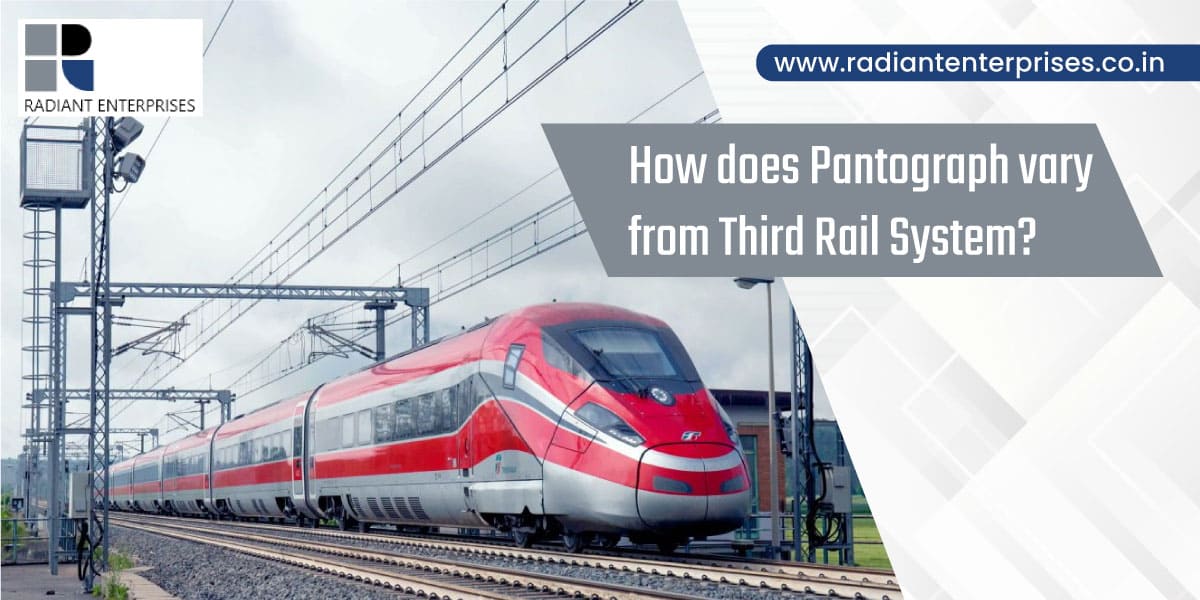
05
May 22
We all know that modern electric locomotives require a constant supply of electricity to run, hence third rail systems or pantographs are utilised in many locomotives to supply electricity to the engine or train.
Pantograph Current Collector:
A device that is mounted on the train or locomotive's roof and is used to collect current from an overhead line by elevating the pantograph is referred to as a Pantograph current collector.
Applications:
-
This technique can be employed in areas when there is fuel scarcity.
-
This approach can be employed where the land or ground level is equal.
-
Because of the uneven ground level, this technique cannot be used on hills or mountains.
-
If the government wants to avoid train pollution, the electric locomotive will be employed, and this system can be used at that time.
Working:
-
The pantograph, as we all know, is mounted on the train's roof to gather current from the overhead wire.
-
The pantograph is made up of numerous parts, as indicated in the diagram above. When the train is not moving, the pantograph is not raised to gather current from overhead lines. When the train is ready to go, the pantograph is quickly lifted by the compressor, which is powered by the train's battery. When the train starts moving, the battery is re-charged. The pantograph is raised, and the carbon strip comes into contact with the wire to collect the current, allowing the train to run on electricity.
-
Overhead lines are made up of rail poles that support conductors, messenger wire that supports weights, insulators, contact wire, as well as contact wire that transports 50Hz, 25KV alternating current, as indicated in the diagram below.
-
The overhead lines are supplied by local substations.
Pantograph Epoxy Insulators, Roof Insulators, Railway Insulators, Third Rail Insulators, and Epoxy Bushings are used in E-locomotives, Tramways, Metro systems, Electronic mobility, etc.
Characteristics:
-
Carries a 50Hz, 25KV AC supply.
-
It's less risky than a third-rail system.
-
Because the wires are above ground level, no security is necessary.
-
The initial investment is higher.
-
Other lines, such as telephone cables and low-tension wires, are disrupted.
Third Rail System:
The third rail system is a way of providing power to locomotives near the tracks. In the third rail system, another rail is placed beside the running rail, which is known as the third rail, and it carries current to provide power to the engine.
Applications:
-
The majority of third-rail systems are found in metro stations.
-
The third rail system can be utilised where overhead lines cannot be constructed, such as in the subway.
-
To save the initial cost.
Working:
-
The locomotive receives power from the ceiling in the pantograph system, but it receives power from below along the track in the third rail system.
-
In the third rail system, a third rail is installed beside the running rail, as shown in the diagram below, and in some situations, a fourth rail is placed in the middle of two tracks, as shown in the diagram below.
-
The third rail system is made up of a conductor that carries a 750-volt DC supply, which is collected by a copper strip that makes constant contact with the third rail and collects current to power the locomotive.
-
Insulators are installed beneath the third rail to protect the conductor from the earth. Every ten feet, an insulator is installed.
-
The third rail and the adjacent running rail are separated by 40.6 cm.
Radiant Enterprises is popular to manufacture rooftop epoxy bushings that are customised to fit particular specifications in addition to some of the particular goods such as support epoxy insulators, railway insulators, as well as third-rail insulators.
Characteristics:
-
Carries 750 volts DC supply.
-
Because it is located near rails, it is more harmful to humans.
-
There is a need for more security (go and visit the metro station).
-
The initial investment will be lower.
-
The expense of upkeep is higher.

